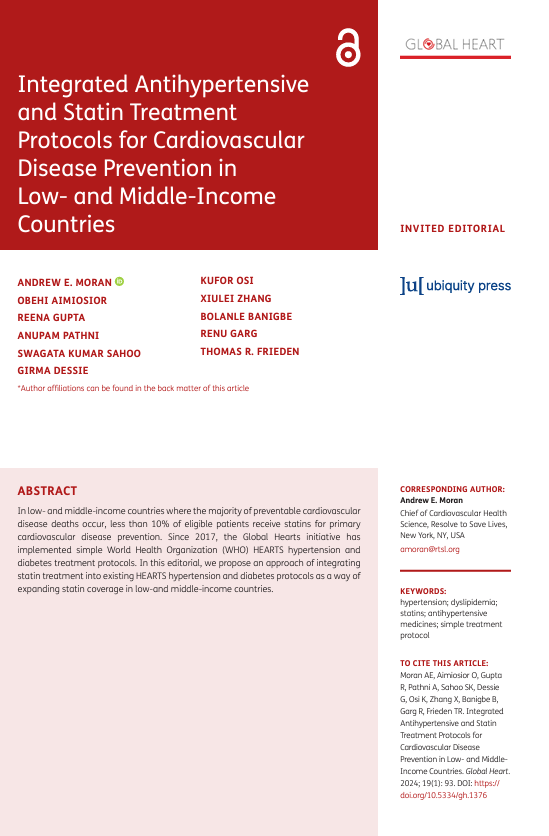This new systematic review demonstrates that standardized and simplified hypertension treatment protocols significantly reduce high blood pressure compared with usual hypertension care. Simple hypertension management protocols streamline treatment steps, improving outcomes for patients and making medications more available and affordable.
ABSTRACT
Large gaps persist in the diagnosis, awareness, treatment, and control of hypertension globally. Standardized treatment protocols (STPs) have been widely proposed to guide hypertension treatment, particularly in primary healthcare settings. However, there has been no review that quantifies the effects of hypertension STPs on blood pressure (BP) reduction and control. We conducted a systematic review of randomized clinical trials (RCTs) among adults with hypertension, comparing hypertension STPs (intervention) with usual care (comparator) for effects on BP. Relevant RCTs were identified by searching multiple electronic databases. Random-effects meta-analyses were conducted to evaluate between-group differences in systolic BP reduction (primary outcome), diastolic BP reduction, BP control, and adverse events (AEs). Sixteen RCTs involving 59,945 participants (baseline mean BP: 149/91 mmHg) were included. Reductions in systolic and diastolic BP with STPs compared to usual care were 6.7 (95% CI 3.7–9.8) mmHg and 2.6 (1.2–4.1) mmHg, respectively (p < 0.001 for both). BP control achieved was 57% in the STP group compared to 24% in the usual care group (p < 0.001). The overall incidence of any AEs was 14.5% versus 13.5% (RR 1.27 [0.88–1.82]) with STPs and usual care, respectively. In summary, interventions involving hypertension STPs significantly reduce systolic and diastolic BP and improve BP control compared to usual care. STPs can, therefore, be an efficient strategy to implement evidence-based treatments and upscale treatment coverage, given the large untreated and uncontrolled hypertension burdens globally.

